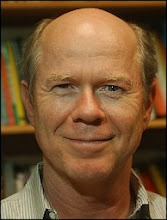HEG helps with ADD/ADHD, dyslexia, and migraine
The most recent technology added to my practice is Hershel Toomin’s biofeedback unit, the nirHEG. This unit trains a person to increase blood flow in the brain, with a special focus on the prefrontal cortex. An optical sensor is placed on the forehead using a headband, and the person is instructed to watch a video and try to increase their score based on blood flow measurements. HEG is not relaxation. It is concentrated attention. Hershel Toomin and his wife were directors of the Los Angeles Biofeedback Institute for four decades and developed this technology from their research attempting to find the most effective form of self-regulation.
The nirHEG is very easy to use. Voluntary control of blood flow in the prefrontal area is quickly learned, seldom requiring more than five minutes. The results are quantifiable as growth in vascularity between exercise sessions. For some conditions, achieving increased blood flow in the brain be more efficient and effective than EEG training.
SPECT and PET studies have implicated insufficient blood flow (hypoperfusion) in specific brain areas as a factor in various brain dysfunctions. Most brain disorders are candidates for improvement by means of increased cortical vascularity. Those brain difficulties that tend to respond best to HEG are: ADD/ADHD, dyslexia, migraine, traumatic brain injury, toxic encephalopathy, epilepsy, endogenous depression, aging dementia, autism, Aspberger's syndrome, schizophrenia, and perhaps Alzheimer's disease. Improvements in memory and cognitive functioning are typically seen within the first ten sessions for most clients.
Over 2000 clinicians internationally have been using nirHEG for clearing mental fog, increasing motivation, improving memory capacity, controlling impulses, recouping lost vascularization, and increasing blood flow to regions of the brain.


0 Comments:
Post a Comment
<< Home